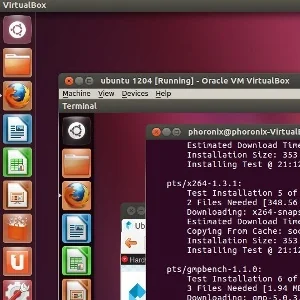QEMU 1.7 Is Bringing New Features For Linux Emulation

QEMU updates have been exciting in recent releases and the 1.7 update will be no different. Among the new features you can find in QEMU 1.7.0 when it ships this week include:
- Audio improvements with HDA device emulation now including a mixer by default. QEMU audio also now works on systems without Open Sound System support via /dev/dsp and honors the QEMU_AUDIO_TIMER_PERIOD environment variable to have less CPU utilization than earlier versions of QEMU.
- VFIO improvements.
- Performance and functionality improvements in QEMU's USB 3.0 support.
- PowerPC now supports dumping guest memory via the dump-guest-memory command.
- The x86 support in QEMU now supports generating ACPI tables that can be used by the firmware directly. In post-1.7 QEMU releases that can be used for enabling new features without modifying all of the firmware components like SeaBIOS and CoreBoot.
- Initial support for more than one Terabyte of RAM, but firmware support needs to be updated.
- Xen x86 HVM domains can now resume from suspend-to-RAM/S3.
- New block device commands for the QEMU monitor.
- The block device throttling algorithm has been rewritten. This new throttling code should be more robust and greater configuration support.
- User-mode emulation support for AArch64 (ARM 64-bit) binaries.
- The VHDX driver now supports creating and writing .vhdx images.
- The TCG (Tiny Code Generator) compiler now supports x32 hosts.
More details on QEMU 1.7 changes can be found via the Wiki-based change-log.
4 Comments

